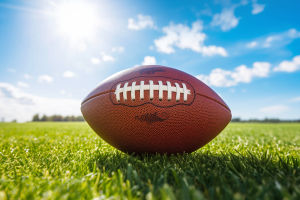Whether you're a beginner or an experienced player, choosing the right soccer ball is essential for enhancing your performance on the field. While many players focus on footwear and jerseys, the soccer ball itself is often overlooked. But the right ball can improve your control, precision, and comfort.
In this guide, we’ll cover the key factors to consider when selecting a soccer ball, from size to material and even brand. By the end, you'll know exactly what to look for to ensure a great game every time.
I Tested Footballs from $1 to $5000
Video: Kieran Brown
1. Understanding Soccer Ball Sizes
One of the first things to consider when picking a soccer ball is the size. Soccer balls come in various sizes, and choosing the correct one is crucial for comfort and performance.
Size 5: This is the standard size used in professional adult matches and for players over 12 years old. Size 5 balls have a circumference of 27 to 28 inches and are the most commonly used for competitive play.
Size 4: Ideal for younger players (ages 8-12), size 4 balls have a circumference of 25 to 26 inches. They are slightly smaller and lighter, making them easier to control for children learning the game.
Size 3: This size is typically used for very young players under the age of 8. With a circumference of 23 to 24 inches, size 3 balls are smaller, lighter, and designed to accommodate the smaller feet of young children.
Choosing the correct size for your age and skill level helps ensure that you can handle the ball better and develop good control over time. Playing with a ball that is too big or too small can make the game more difficult and frustrating.
2. Material and Construction of the Ball
The material and construction of the soccer ball play a significant role in its performance, durability, and feel. Most soccer balls are made with either synthetic leather or polyurethane covers, but there are key differences to consider:
Synthetic Leather: This material is common for both training and match balls. Synthetic leather balls are durable, offer a good feel, and are designed to withstand different weather conditions. They provide a balance between softness and firmness, making them great for players of all levels.
PU (Polyurethane): Balls made with PU are usually softer and provide better touch and feel, often favored by professional players for match play. They’re often more expensive than synthetic leather balls but are worth the investment for competitive matches.
Construction and Stitching: Some balls are machine-stitched, while others are hand-stitched. Hand-stitched balls tend to be more durable and maintain their shape longer, although they may be a bit pricier. The number of panels on the ball also affects its flight stability and consistency when kicked.
3. Durability and Play Conditions
The environment in which you play soccer also influences your ball choice. Different types of soccer balls are made for various surfaces and weather conditions.
Match Balls: These balls are designed for high-quality play and are used in official matches. They are best suited for grass fields and professional-level competitions. Match balls are typically more expensive because of their superior performance characteristics.
Training Balls: These balls are built to last longer and handle rougher conditions, such as artificial turf or hard ground. While training balls may not have the same precision as match balls, they are excellent for regular practice sessions and can withstand heavy usage.
Choosing the right soccer ball may seem like a small detail, but it can make a huge difference in how you experience the game. From selecting the right size to understanding the materials and durability needed for your playing conditions, every choice impacts your performance.


